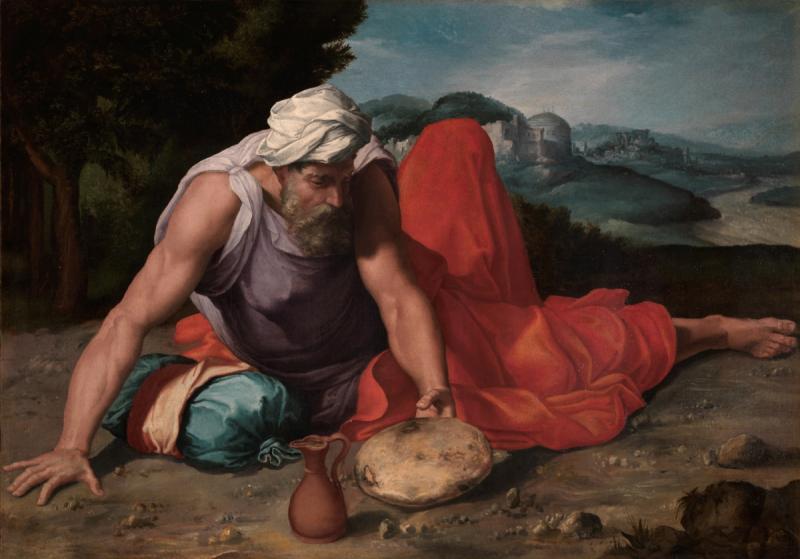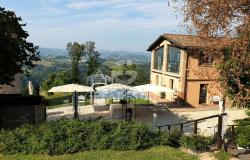[Image: Daniele da Volterra, Il profeta Elia nel deserto.]
“Eternity and Time between Michelangelo and Caravaggio” documents, through the art of seminal late Renaissance and early Baroque painters, what was one of the highest and most fascinating times in Western history: the years between the Sack of Rome (1527) and Caravaggio’s death (1610), between the start of the Protestant Reformation (1517-1520) and the Council of Trent (1545-1563), between Michelangelo’s Last Judgement (1541) and Galileo’s Sidereus Nuncius (the first scientific work based on observations made through a telescope, 1610). A time that signals the beginning of modern times.
A century that, in art, saw the decline of the Renaissance ideals and the rise of Mannerism, and eventually Baroque, with the birth and development of new schools and trends.
The time between the completion of Michelangelo's Last Judgment in the Sistine Chapel (1541) and Michelangelo Merisi da Caravaggio's brief artistic affirmation in Rome is one of the most compelling and exciting for the history of art. And it is well represented in this exhibition, which features masterpieces by artists of the caliber of Raffaello, Rosso Fiorentino, Lorenzo Lotto (San Cristoforo tra i santi Rocco e Sebastiano), Pontormo, Sebastiano del Piombo, Correggio (Compianto sul Cristo morto), Bronzino, Vasari, Parmigianino, Daniele da Volterra, El Greco, Annibale Carracci (Pietà), Ludovico Carracci (Conversione di Saulo) Veronese, Tiziano (Paolo III e i nipoti Alessandro e Ottavio Farnese), Zuccari, Guido Reni (Ecce Homo) and Rubens.
Michelangelo is represented with the statue Cristo Risorto Giustiniani and Caravaggio with the paintings La Madonna dei Pellegrini and Fanciullo morso da un ramarro.
The Musei San Domenico in the Emilia-Romagna town of Forlì are located in a renovated 13th-century Dominican convent.
Advance booking is recommended. Visit the exhibition’s website here.



